Built stand for anvil
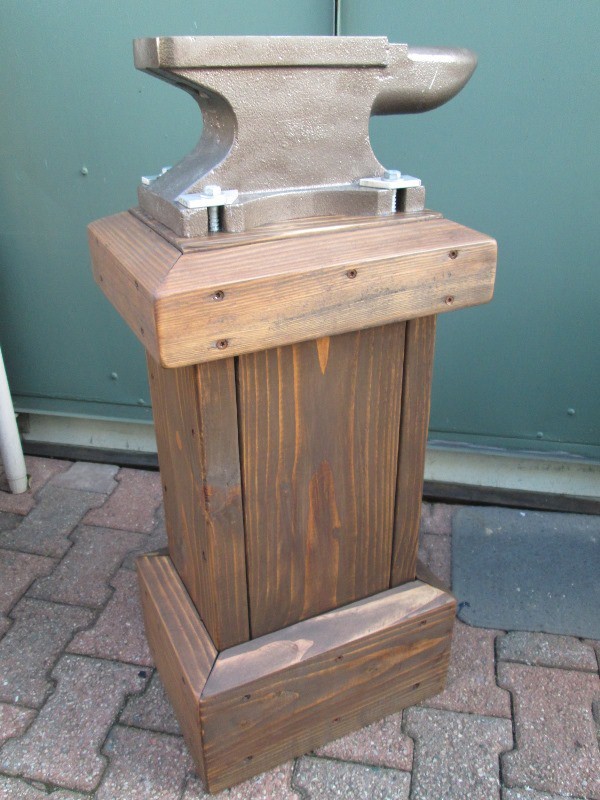
Building a stand for anvil. Simple 2x8s. Start with the anvil.
On the wish list for ever, an anvil. Always hoped I'd find a nice older one reasonably priced. Recently one slipped by me-a day late. Broke down and bought a harbor freight 50#, cast iron beater block. It will work for me. I don't forge, just need something to beat on beside my vise or what ever scrap steel I throw on the ground.
Calling it an Anvil is a bit of a stretch, but for lack of a better single word... Anvils 8 1/2"x 4 face sufficient, the horn more of a semi round snout will be nice for shaping. The anvil as noted is cast iron, so rather soft, easy to dimple if struck, though try not to directly. By same token easy to run a file on face if needed, and definitely quieter than a good anvil.
Other than blue some attention needed before making a stand.
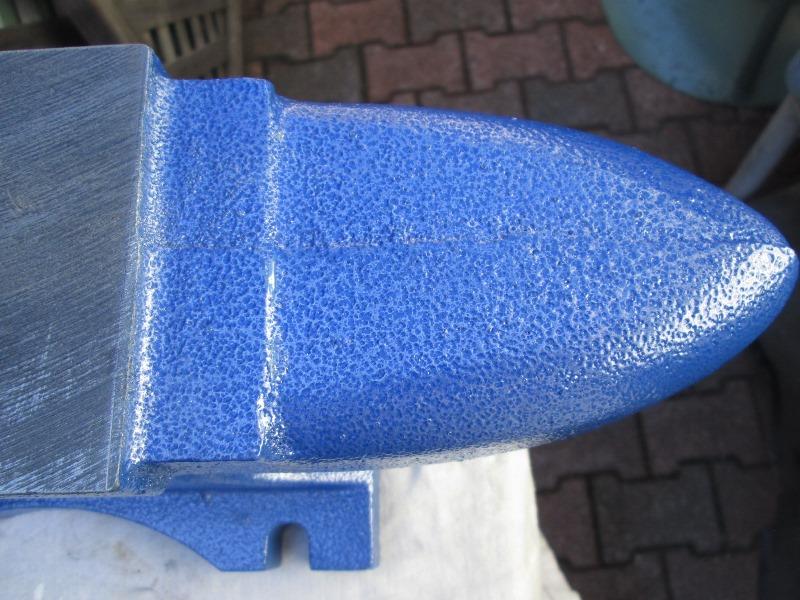
Of coarse quality isn't part of H/F cast items. Looks like the 2 halves of mold shifted 1/8" both vertically and horizontally. The face and bottom of base are machined flat but no attention given the horn. Half of the horn is elevated above the other half and protrudes beyond at the end. The front break edge isn't square to sides or face.
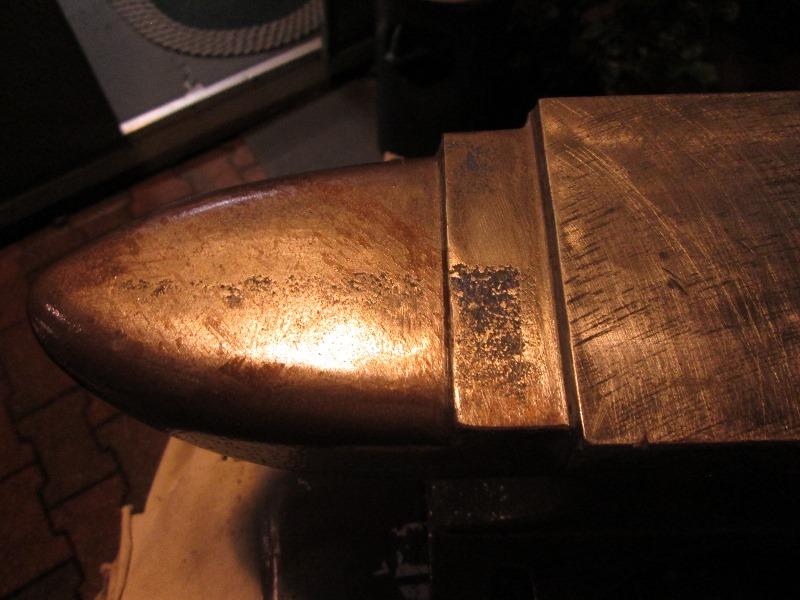
Spent couple of hours grinding away material, flattening the top of horn and blending the tip.
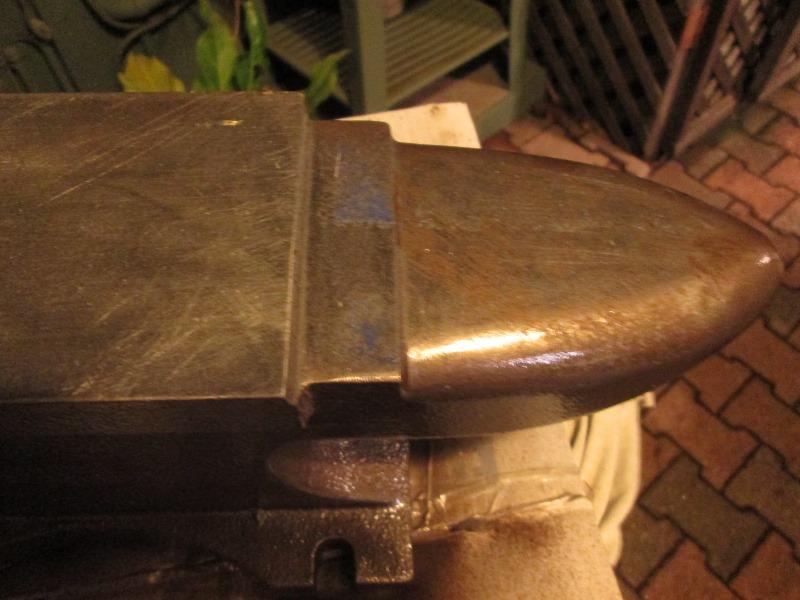
Also cut back the face to make front edge square. Lightly faced the top face, pretty coarse grind. Spent most time hand filing and rounding the curves of horn.
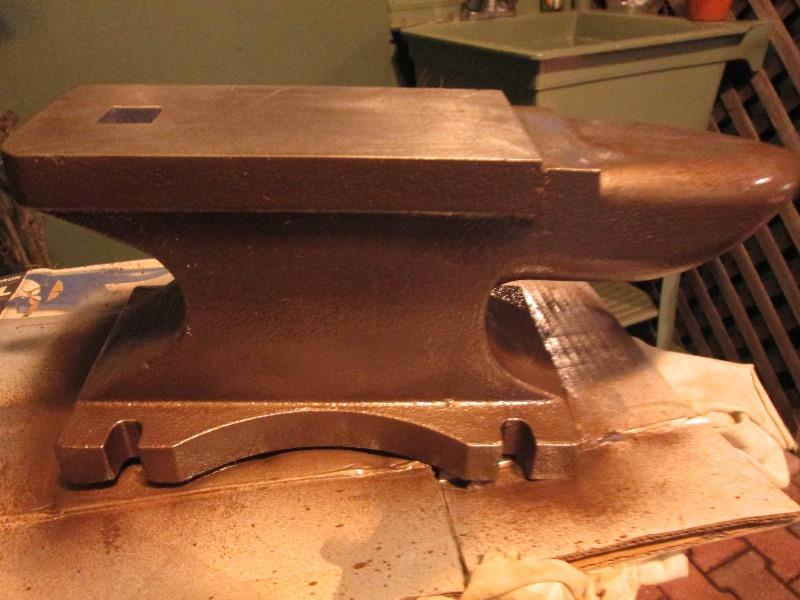
Not too shabby, scuffed with some scotch brite and painted with left over hammertone brown. This will live outside, not too concerned with appearance but its not blue!
Anxious to get up and useable. Though a ways off I'll be making some tools to utilize the hardy hole, mostly for bending small flat & round bar
The Stand
Once determined this will function now I need a stand. I was going to use a stump but readily available is eucalyptus or pine. Decided to use 2x8 (fir) lumber. Full height verticals with internal blocks and wrapped base for larger footprint and wrap top. I may eventually band. Also as its hollow if needed I'll bore a large hole and fill with ballast. For height Im at 32 and may raise. Conventional wisdom is top of anvil should be at fist height with arm slightly bent (end of hammer swing). Would have put it at 24", way to low for me and my use. Again Im not forging, beating hot metal to shape.
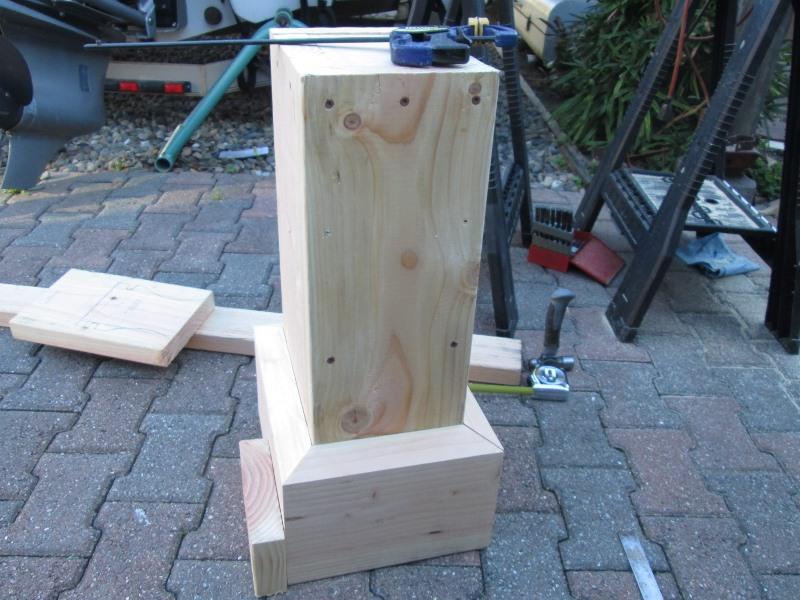
Perfuse amount of glue and 3" screws got basic assembly up so I can set anvil up to test stability and height.
Nixed the bottom 2x4 toe board, pretty stable and it looked funny. Cut all the top surfaces at slight angle so debris and water wont pile. I need easily moveable so adding wheels.
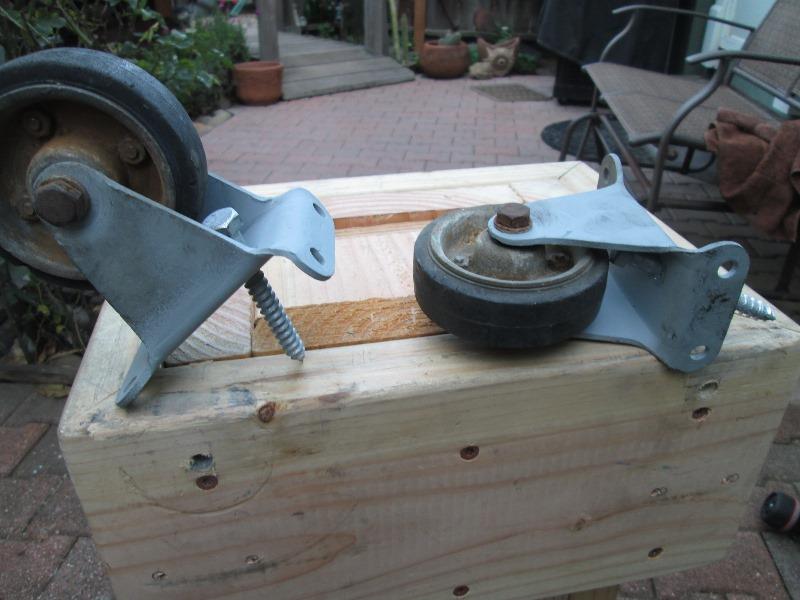
Had these old casters, solid wheels. Bent the front edge to go under the stand base, wheels about a 1/4" off ground. (used new anvil!) Slight tilt and wheels touch-haven't looked at if I need a handle or just drag around using anvil. To be done. Intent was anvil and stands weight would rest on bent lip instead of shear on the lag bolts. When standing, stand will set on the bent lips, adding a piece of metal on other side so stand would have 3 contact points to help with the fact of using on brick. However I now see the downward force will be transferred to the outer wrapped boards instead of thru the verticals....hmm, details.
Probably use pressure treated 2x (or sacrificial 1/4" lattice would work) and add another layer to base. Should better transfer force. Does mean Ill have to lean farther to engage wheels so likely use the lattice. TBD, hindsight I should have notched the toe board so bent lips were flush.
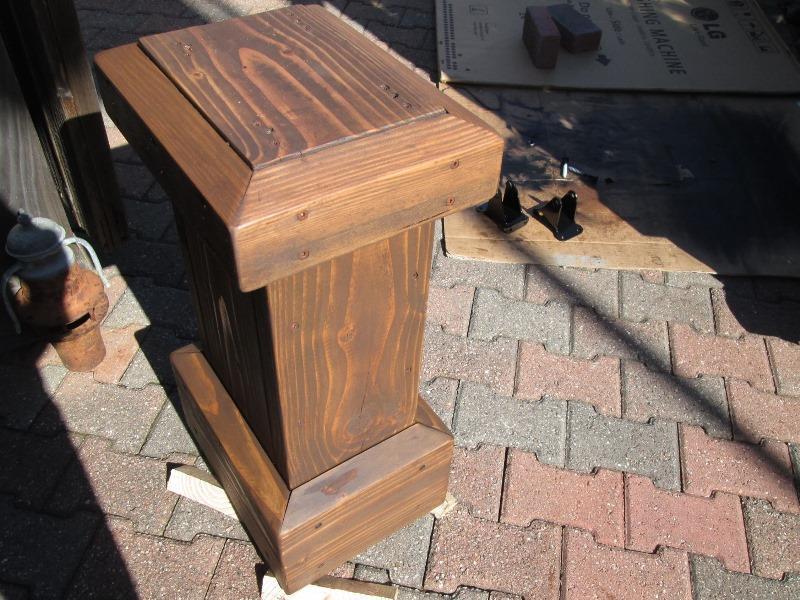
And stained before final assembly. Disassembled the wheels, cleaned up and painted.
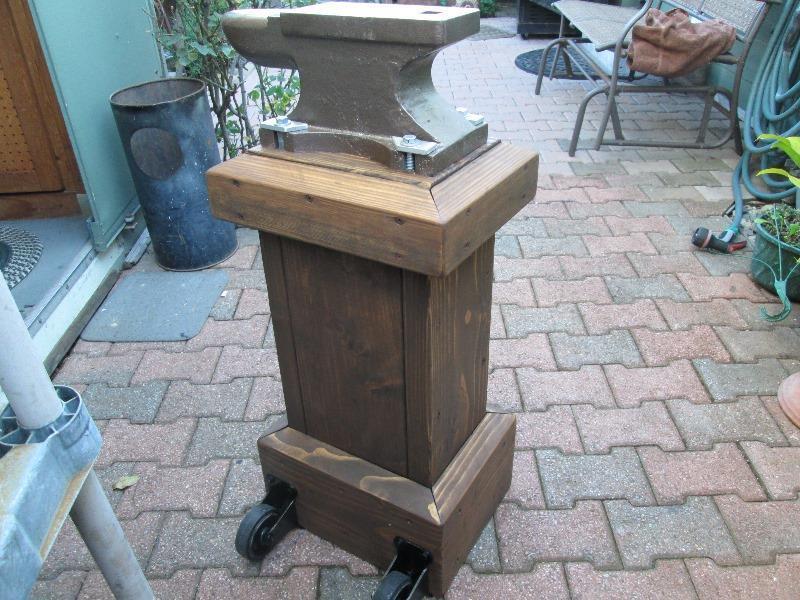
And assembled. Mounted the wheels. Mounted vise. Cut some aluminum bar for more surface contact under the 3" lag bolts. Was going to cut 2 radius pieces to capture the vise but....maybe later. If revisited thouhg making a full length piece of angle with 3 short tabs to inside radius. Contain the anvil and cover lag bolts.
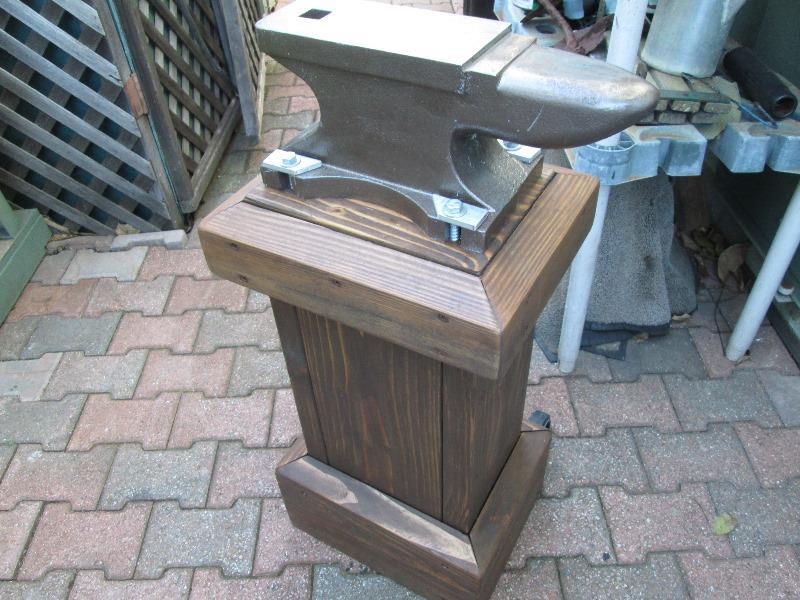
Grabbing sides of stand from the front, lifting a tad works for just moving around a few feet to working position. But moving any distance needs to be tilted from back and drug like a dolley and in that case really needs a handle. Rolled about 20 feet and almost lost it twice, very unstable fully tilted back on wheels. As need arises. Anyway simple stand.
Back to top of page
Back to shop tools & mods section
Back to Our shops home page